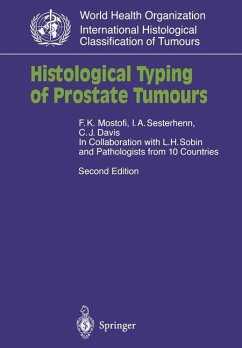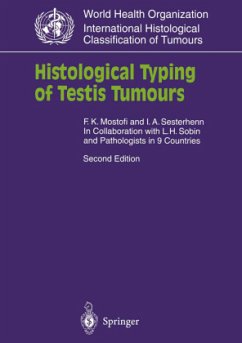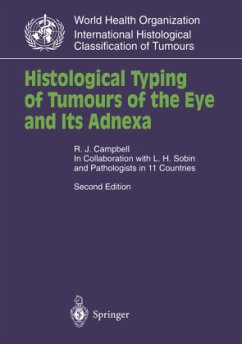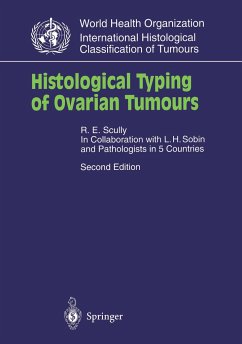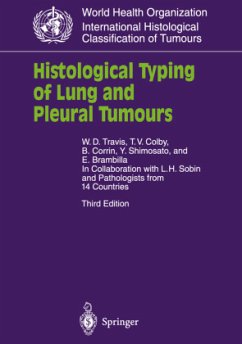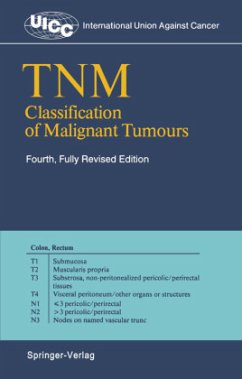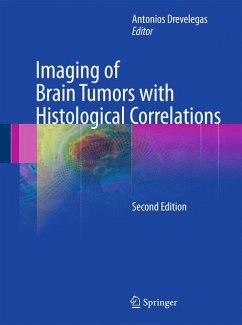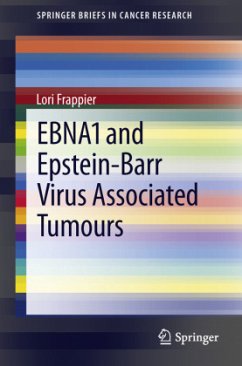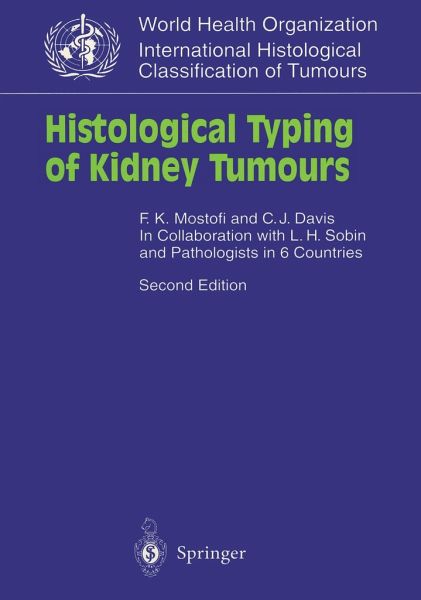
Histological Typing of Kidney Tumours
In Collaboration with L. H. Sobin and Pathologists in 6 Countries
Mitarbeit: Sobin, L.H.

PAYBACK Punkte
0 °P sammeln!
This classification is based primarily on the microscopic charac teristics of tumours and, therefore, is concerned with morpho logically identifiable cell types and histological patterns, as seen with conventional light microscopy. The term tumours is used synonymously with neoplasm. The phrase tumour-like is applied to lesions which resemble neo plasms, clinically or morphologically, but do not behave biologi cally in a neoplastic manner. They are included in this classifica tion because they give rise to problems in differential diagnosis and because of the unclear borderline between neoplas...
This classification is based primarily on the microscopic charac teristics of tumours and, therefore, is concerned with morpho logically identifiable cell types and histological patterns, as seen with conventional light microscopy. The term tumours is used synonymously with neoplasm. The phrase tumour-like is applied to lesions which resemble neo plasms, clinically or morphologically, but do not behave biologi cally in a neoplastic manner. They are included in this classifica tion because they give rise to problems in differential diagnosis and because of the unclear borderline between neoplasms and certain non-neoplastic lesions. Synonyms are listed only if they have been used widely, or if they are considered to be helpful to the understanding of the lesion. In such cases, the preferred term is given first, followed by the synonym. Although the emphasis of this classification is on histological typing, in the examination of kidney tumours, consideration should be given to the degree of cellular anaplasia, the extent of local spread, vascular and lymphatic invasion, and the occur rence of metastasis. The scheme of histological grading suggested here is as fol lows: Grade I applies to the tumours that have the least degree of cellular anaplasia compatible with a diagnosis of malignancy; . grade II! applies to tumours with the most severe degrees of cel lular anaplasia; and grade I! applies to those tumours in be tween. This scheme is applicable to the carcinomas of the renal parenchyma and pelvis.





